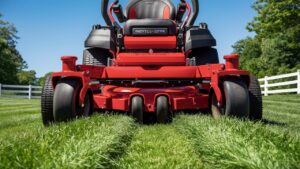Propane heaters are generally cleaner and more efficient, while kerosene heaters offer higher heat output and portability. Your choice depends on your heating needs and preferences.
Heating options vary widely, with propane and kerosene being two popular choices. Propane heaters produce fewer emissions, making them more environmentally friendly. They are often favored for indoor use due to their cleaner burn. Kerosene heaters, on the other hand, can generate substantial heat quickly, making them suitable for outdoor or larger spaces.
Each type has its pros and cons, from fuel availability to cost-effectiveness. Understanding these differences helps you make an informed decision based on your specific heating requirements. Choose wisely to ensure comfort and efficiency in your space.

Introduction To Portable Heating
Portable heating is essential for comfort in various spaces. It provides warmth when traditional heating fails. Two popular options are propane heaters and kerosene heaters. Each offers unique benefits and features. Understanding these can help you choose wisely.
Diverse Heating Options For Various Needs
Portable heaters come in many types. They serve different purposes and preferences. Here are some key options:
- Electric Heaters: Easy to use and widely available.
- Propane Heaters: Efficient and good for outdoor use.
- Kerosene Heaters: Ideal for emergency situations.
- Wood Stoves: Provide a rustic warmth.
Each option has its own strengths. Consider space, usage, and safety. This ensures you choose the best heater for your needs.
The Role Of Propane And Kerosene Heaters In Modern Spaces
Propane and kerosene heaters play a crucial role today. They offer reliable heating solutions in various settings. Here’s how they compare:
| Feature | Propane Heater | Kerosene Heater |
|---|---|---|
| Fuel Type | Propane Gas | Kerosene Oil |
| Heat Output | High Efficiency | Moderate Efficiency |
| Portability | Very Portable | Portable |
| Safety | Less Risky | More Caution Needed |
Propane heaters are often preferred for their efficiency. They heat spaces quickly and are safer to use. Kerosene heaters are useful in emergencies. They can provide heat even without electricity.
Both types are valuable in homes, garages, and outdoor events. Choose based on your specific needs and safety preferences.
Propane Heaters: An Overview
Propane heaters are popular for their efficiency and convenience. They provide warmth quickly and effectively. Many people use them in various settings. Understanding how they work helps you choose the right heater.
How Propane Heaters Work
Propane heaters operate by burning propane gas. This process generates heat, which is then distributed into the surrounding area. Here’s a breakdown of the steps:
- Propane gas is stored in a tank.
- The gas flows to the heater.
- Ignition occurs, creating a flame.
- Heat transfers to the air, warming the space.
Many propane heaters come with safety features. These include:
- Automatic shut-off if tipped over
- Low oxygen shut-off to prevent hazards
This makes propane heaters safe for indoor and outdoor use.
Common Uses For Propane Heaters
Propane heaters serve various purposes. Here are some common uses:
| Use Case | Description |
|---|---|
| Indoor Heating | Great for homes, garages, and workshops. |
| Outdoor Heating | Perfect for patios and camping. |
| Emergency Heating | Useful during power outages. |
| Construction Sites | Keeps workers warm in cold weather. |
These heaters are versatile and effective in many situations.
Kerosene Heaters: An Overview
Kerosene heaters are popular heating solutions. They provide warmth in various settings. These heaters use kerosene fuel to generate heat. Many people prefer them for their efficiency and portability.
How Kerosene Heaters Operate
Kerosene heaters work through simple mechanisms. They burn kerosene to produce heat. Here are the main components:
- Fuel Tank: Holds the kerosene fuel.
- Burner: Where the fuel ignites.
- Heat Exchanger: Distributes warm air.
- Fan: Helps circulate warm air (in some models).
The heater’s wick absorbs kerosene. It draws the fuel up to the burner. When ignited, it creates a flame. This flame heats the surrounding air. The process is efficient and effective.
Typical Applications For Kerosene Heaters
Kerosene heaters serve various purposes. They are commonly used in:
- Homes: For supplemental heating during winter.
- Workshops: To keep workers warm while they work.
- Construction Sites: For heating temporary spaces.
- Emergency Situations: As backup heat during power outages.
Many people appreciate their portability. Kerosene heaters can easily move from one place to another. They are a reliable source of heat.
Safety Considerations
Choosing between a propane heater and a kerosene heater involves many safety factors. Understanding these can help you make a safer choice. Each type has unique safety features and risks. Below, we explore safety features of propane heaters and essential measures for kerosene heaters.
Safety Features Of Propane Heaters
Propane heaters come with several built-in safety features. Here are the key aspects:
- Tip-Over Switch: Shuts off the heater if it falls.
- Overheat Protection: Prevents the heater from overheating.
- Flame Failure Device: Stops gas flow if the flame goes out.
- Carbon Monoxide Detector: Alerts you if CO levels rise.
These features help ensure a safer heating experience. Regular maintenance is crucial. Check connections and clean vents often.
Safety Measures For Kerosene Heaters
Kerosene heaters require careful handling and safety precautions. Follow these safety measures:
- Use Only Kerosene Fuel: Never substitute with other fuels.
- Ventilation: Ensure proper airflow to avoid CO buildup.
- Refuel Outside: Always refuel your heater outside.
- Keep Away from Flammable Materials: Maintain a safe distance from anything flammable.
- Regular Maintenance: Inspect for leaks and clean regularly.
Implement these measures for safe operation. Educate everyone in your home about potential risks.
| Feature | Propane Heaters | Kerosene Heaters |
|---|---|---|
| Tip-Over Switch | Yes | No |
| Overheat Protection | Yes | No |
| Flame Failure Device | Yes | No |
| Carbon Monoxide Detector | Yes | Requires external detector |
Understanding these safety features helps you choose wisely. Prioritize safety for a comfortable heating experience.
Efficiency Showdown
Choosing between a propane heater and a kerosene heater involves understanding their efficiency. Both options offer unique benefits. Here, we compare their fuel efficiency and heat output.
Fuel Efficiency: Propane Vs Kerosene
Fuel efficiency plays a vital role in heating costs. Here is a quick comparison:
| Aspect | Propane | Kerosene |
|---|---|---|
| Energy Content (BTU per gallon) | 91,500 | 138,500 |
| Burning Efficiency | 90% | 85% |
| Cost per BTU | Lower | Higher |
Heat Output Comparison
Heat output determines how quickly a space warms up. Here’s how they stack up:
- Propane Heaters:
- Provide consistent heat.
- Heat up spaces quickly.
- Ideal for indoor use.
- Kerosene Heaters:
- Produce higher initial heat output.
- Work well in outdoor settings.
- Can be less efficient indoors.
Both heaters have their strengths. Choose based on your heating needs and environment.
Cost Analysis
Understanding the costs helps you choose between a propane heater and a kerosene heater. This section breaks down the expenses involved in both options. It covers initial costs, installation, and long-term running costs.
Initial Costs And Installation
The initial costs vary for propane and kerosene heaters. Here’s a quick comparison:
| Heater Type | Initial Cost | Installation Cost |
|---|---|---|
| Propane Heater | $200 – $1,500 | $100 – $300 |
| Kerosene Heater | $100 – $800 | $0 – $50 |
Propane heaters tend to be more expensive than kerosene heaters. Installation costs are higher for propane due to the need for a tank. Kerosene heaters are often portable, needing minimal installation.
Long-term Running Costs
Running costs include fuel prices and maintenance. Here’s a breakdown:
- Propane Heater:
- Fuel Cost: $2.50 – $4.00 per gallon
- Annual Maintenance: $100 – $200
- Kerosene Heater:
- Fuel Cost: $3.00 – $4.50 per gallon
- Annual Maintenance: $50 – $100
Propane heaters usually offer better efficiency. They might cost more upfront but save on fuel in the long run. Kerosene heaters have lower fuel costs, but their efficiency can drop.
Environmental Impact
The choice between a propane heater and a kerosene heater affects the environment significantly. Understanding their emissions and environmental considerations is crucial. This section explores the differences in their environmental impacts.
Emission Levels From Propane Heaters
Propane heaters are generally cleaner than kerosene heaters. They emit fewer harmful substances. Here are some key points about propane emissions:
- Lower carbon dioxide (CO2) emissions.
- Minimal particulate matter released.
- Less sulfur dioxide (SO2) compared to kerosene.
Emission levels vary based on heater design. Newer models are more efficient. A table below shows typical emission levels:
| Emissions | Propane Heaters | Kerosene Heaters |
|---|---|---|
| CO2 (grams/hour) | 150 | 250 |
| SO2 (grams/hour) | 1 | 5 |
| Particulate Matter (grams/hour) | 0.1 | 0.5 |
Environmental Considerations For Kerosene Heaters
Kerosene heaters have notable environmental drawbacks. They produce higher emissions than propane. Here are some concerns:
- Higher CO2 emissions contribute to climate change.
- Release of harmful particulates can affect air quality.
- SO2 emissions can lead to acid rain.
Using kerosene heaters may require additional ventilation. This helps reduce indoor air pollution. Check your local regulations. Some areas restrict kerosene use due to its environmental impact.
Maintenance And Longevity
Proper maintenance is key to the lifespan of any heater. Both propane and kerosene heaters have unique needs. Understanding these can enhance performance and longevity.
Maintaining Your Propane Heater
Regular maintenance ensures your propane heater runs efficiently. Follow these steps:
- Check the Fuel Levels: Always monitor propane levels.
- Inspect Hoses: Look for cracks or leaks.
- Clean Filters: Remove dust and debris regularly.
- Test the Ignition: Ensure it lights easily.
- Professional Servicing: Schedule yearly check-ups.
Routine maintenance can extend the life of your heater by several years. Keeping the unit clean helps it work efficiently. A well-maintained propane heater can last over 20 years.
Caring For A Kerosene Heater
Kerosene heaters require specific care. Follow these guidelines for optimal performance:
- Use Quality Fuel: Always use clean, high-quality kerosene.
- Drain the Tank: Empty it during off-seasons.
- Replace Filters: Change filters annually for better airflow.
- Clean Regularly: Wipe down surfaces to prevent soot buildup.
- Store Properly: Keep the heater in a dry, cool place.
With proper care, kerosene heaters can last up to 10 years. Regular cleaning and maintenance prevent safety hazards. A well-maintained kerosene heater operates efficiently.
Portability And Convenience
Choosing between a propane heater and a kerosene heater often hinges on portability and convenience. Each type of heater offers distinct advantages. Understanding these can help you make an informed decision.
Moving And Storing Propane Heaters
Propane heaters are generally lightweight and easy to move. They often come with built-in handles or wheels. This makes transporting them simple and hassle-free. Consider these points:
- Weight: Most propane heaters weigh less than 30 pounds.
- Size: Compact designs fit easily in small spaces.
- Storage: Can be stored in a garage or shed when not in use.
Follow these steps for safe storage:
- Ensure the heater is cool.
- Disconnect the propane tank.
- Store in a dry, well-ventilated area.
Transporting And Handling Kerosene Heaters
Kerosene heaters require careful handling. They tend to be bulkier and heavier. Here are key considerations:
- Weight: Many kerosene heaters weigh over 30 pounds.
- Fuel Storage: Kerosene needs a secure, leak-proof container.
- Spillage Risk: Always transport carefully to avoid spills.
For safe transportation:
- Turn off the heater and allow it to cool.
- Ensure the fuel tank is securely closed.
- Use a dolly for easier movement.
| Feature | Propane Heater | Kerosene Heater |
|---|---|---|
| Weight | Lightweight | Heavier |
| Storage | Compact and easy | Requires careful handling |
| Fuel Handling | No spillage risk | Spillage risk |
The Verdict
Choosing between a propane heater and a kerosene heater can be tough. Each option has its benefits and drawbacks. This section helps you decide which heater fits your needs best.
Choosing The Right Heater For Your Space
Consider these factors before making your choice:
- Space Size: Propane heaters work well in larger areas. Kerosene heaters are better for smaller spaces.
- Heat Output: Check the BTU ratings. Higher BTUs mean more heat.
- Fuel Availability: Propane is widely available. Kerosene might be harder to find.
- Cost: Compare the initial costs and long-term fuel expenses.
- Safety: Propane heaters often have safety features. Kerosene can produce fumes.
| Feature | Propane Heater | Kerosene Heater |
|---|---|---|
| Heat Efficiency | High | Medium |
| Fuel Cost | Varies | Generally lower |
| Portability | Easy | Moderate |
| Safety Features | More | Fewer |
Final Thoughts On The Heat Showdown
Both heaters have unique strengths. Here’s a quick summary:
- Propane Heaters: Best for efficiency and safety.
- Kerosene Heaters: Great for affordability and availability.
Your choice depends on your specific needs. Consider space, fuel type, and safety. A well-informed decision leads to cozy warmth.
Frequently Asked Questions
What Is The Difference Between Propane And Kerosene Heaters?
Propane heaters use propane gas as fuel, while kerosene heaters rely on kerosene oil. Propane heaters are generally cleaner and produce fewer emissions. Kerosene heaters tend to be more efficient in heating spaces quickly. Consider your specific needs and usage when choosing between them.
Which Heater Is More Energy-efficient?
Propane heaters are often considered more energy-efficient than kerosene heaters. They convert fuel to heat more effectively, providing instant warmth. However, efficiency can vary based on the model and brand. Always check the energy ratings before making a purchase to ensure optimal performance.
Are Propane Heaters Safer Than Kerosene Heaters?
Propane heaters are generally safer than kerosene heaters. They have built-in safety features like automatic shut-off mechanisms. Kerosene heaters can pose a risk of fire and require careful monitoring. Always follow safety guidelines and manufacturer instructions regardless of the type you choose.
Can You Use Propane Heaters Indoors?
Yes, propane heaters can be used indoors, but with caution. Ensure proper ventilation to avoid carbon monoxide buildup. Look for models specifically designed for indoor use. Always follow safety guidelines to minimize risks while enjoying the warmth of your propane heater.
Conclusion
Choosing between a propane heater and a kerosene heater depends on your specific needs. Consider factors like efficiency, safety, and fuel availability. Both options have their advantages and drawbacks. Ultimately, selecting the right heater can ensure comfort and warmth in your space.
Make an informed choice for optimal heating solutions.







